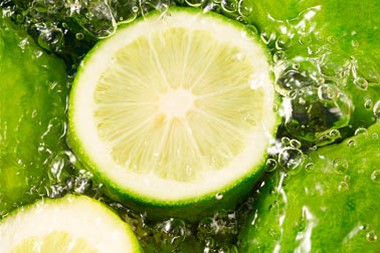Exploring the Effects of Kojic Acid on Skin A Comprehensive Overview
Introduction
In the realm of skincare, a multitude of active ingredients are utilized to address various skin concerns. it, a naturally derived compound, has gained significant attention for its potential benefits in managing skin issues such as hyperpigmentation, uneven skin tone, and age spots. This article delves into the mechanisms, applications, and considerations surrounding the use of it in skincare.
Understanding it
it, a byproduct of the fermentation process in certain foods like rice, soy, and sake, is an organic compound with potential skin-enhancing properties. It is widely recognized for its ability to inhibit the production of melanin, the pigment responsible for skin, hair, and eye color. This property makes it a popular choice in formulations targeting hyperpigmentation and related concerns.
Mechanisms of Action
it exerts its influence on the skin through its role as a tyrosinase inhibitor. Tyrosinase is a key enzyme in the melanin synthesis pathway. By interfering with tyrosinase activity, it reduces the amount of melanin produced, leading to a gradual reduction in pigmentation irregularities. It's important to note that while it can yield visible improvements, consistent and long-term usage is usually required to achieve optimal results.
Benefits and Applications
1. Hyperpigmentation Management its primary use lies in addressing hyperpigmentation issues such as melasma, sunspots, and post-inflammatory hyperpigmentation. Regular application of it-containing products can help fade these darkened areas and promote a more even skin tone.
2. Skin Brightening Beyond hyperpigmentation, it is also employed for overall skin brightening. By regulating melanin production, it contributes to a radiant complexion, lending the skin a youthful glow.
3. Anti-Aging Properties The reduction of hyperpigmentation and enhanced skin brightness can indirectly contribute to an anti-aging effect, as age spots and uneven skin tone are common signs of aging skin.
4. Acne Scarring Some formulations containing it are also suggested for managing the appearance of acne scars, although its effectiveness in this regard varies and may be influenced by individual skin types.
Usage Considerations
1. Patch Testing As with any new skincare product, patch testing is crucial before applying it-based products to larger areas of skin. This helps to identify potential allergic reactions or sensitivities.
2. Sun Protection it can render the skin more sensitive to the sun's harmful ultraviolet (UV) rays. Therefore, sun protection measures, such as using sunscreen with a high SPF rating, are paramount when using it.
3. Gradual Incorporation To minimize the risk of adverse reactions, it's recommended to introduce it-containing products gradually into one's skincare routine. Starting with lower concentrations and using products a few times a week before increasing frequency can be a prudent approach.
4. Consultation with Professionals Individuals with pre-existing skin conditions, such as eczema or rosacea, should seek the guidance of a dermatologist before integrating it into their skincare regimen.
Conclusion
it's role in the skincare landscape is one of promise and potential. Its ability to address hyperpigmentation and promote a more even skin tone has positioned it as a valuable ingredient in various skincare products. However, like any active ingredient, it's important to exercise caution, perform patch tests, and adhere to recommended usage guidelines to maximize benefits while minimizing potential risks. As the world of skincare continues to evolve, it remains a notable player in the quest for healthier, more radiant skin.

Is it OK to Use it Every Day? Exploring Safe and Effective Skincare Practices
In the realm of skincare, the pursuit of radiant and flawless skin is a common goal. With a plethora of products and ingredients available, it's essential to understand their benefits, limitations, and potential risks. it, a popular ingredient in the skincare industry, has gained attention for its skin-lightening and brightening properties. But the question arises is it safe to use it every day?
Understanding it
it is a natural compound that is derived from various fungi and is a byproduct of the fermentation process in the production of sake, soy sauce, and rice wine. Its primary function in skincare is to inhibit tyrosinase, an enzyme involved in melanin production. This makes it a sought-after ingredient for addressing concerns such as hyperpigmentation, age spots, and melasma.
The Appeal of Daily Use
Given the desire for quick results, some individuals might be tempted to use it daily. After all, consistent use often yields faster outcomes. However, skincare experts emphasize the importance of balance and moderation. it, like many active ingredients, can have both positive and negative effects depending on its usage frequency.
The Benefits of Moderate Use
Using it in a controlled manner can indeed offer several benefits. Its ability to hinder melanin production can lead to a reduction in uneven skin tone and dark spots. When used in moderation, it can help individuals achieve a brighter and more radiant complexion. It is particularly effective when incorporated into a well-rounded skincare routine that includes sunscreen, gentle cleansing, and proper hydration.
The Potential Pitfalls of Overuse
While its skin-lightening properties are appealing, overusing it can lead to adverse effects. One major concern is skin sensitivity. Daily application can disrupt the skin's natural barrier, resulting in redness, itching, and dryness. Moreover, excessive use may lead to a paradoxical increase in melanin production, a phenomenon known as the "rebound effect." This can exacerbate hyperpigmentation issues and potentially counteract the desired outcomes.
Striking the Right Balance
The key to reaping the benefits of it while avoiding its pitfalls lies in striking a balance. Instead of daily use, many skincare experts recommend incorporating it into a routine on a schedule that allows the skin to recover and regenerate. This could mean using it every other day or a few times a week, depending on an individual's skin type and sensitivity.
Complementary Practices for Optimal Results
For those incorporating it into their skincare regimen, several additional practices can enhance its effectiveness and minimize potential risks
1. Sun Protection Since it makes the skin more sensitive to the sun, diligent sunscreen application is crucial. UV rays can exacerbate pigmentation issues, so broad-spectrum sunscreen with a high SPF should be a daily staple.
2. Hydration Well-moisturized skin is more resilient and better equipped to tolerate active ingredients. Regular use of a gentle, hydrating moisturizer can help mitigate potential dryness and irritation.
3. Patch Testing Before applying it to the entire face, a patch test on a small area of the skin can help identify any adverse reactions or allergies.
4. Consultation It's advisable to consult a dermatologist or skincare professional before incorporating it, especially for individuals with sensitive or problematic skin. A personalized approach can help tailor its usage to individual needs.
Conclusion
In the pursuit of healthy and glowing skin, Kojic Acid can be a valuable ally when used mindfully. While the desire for swift results might tempt individuals to use it daily, moderation and careful consideration should guide its incorporation into a skincare routine. By understanding the benefits, limitations, and potential risks of using it, individuals can make informed decisions that promote optimal skin health and radiance. Remember, in the realm of skincare, patience and prudence often yield the most enduring outcomes.
Does it Truly Brighten and Even Skin Tone?
Introduction
In the quest for achieving radiant and flawless skin, various skincare ingredients have gained popularity. Among these, it has emerged as a prominent contender, promising to lighten skin and address issues like hyperpigmentation and uneven skin tone. But does it truly live up to its claims? In this article, we delve into the science behind its skin-lightening potential, its mechanisms of action, benefits, potential side effects, and its place in the skincare industry.
Understanding it
it is a naturally occurring compound derived from various fungi, including Aspergillus oryzae and Acetobacter species. It gained prominence due to its ability to inhibit the production of melanin, the pigment responsible for skin coloration. Melanin overproduction can lead to hyperpigmentation, causing uneven skin tone, dark spots, and melasma.
Mechanisms of Action
Its skin-lightening effect primarily results from its role as a tyrosinase inhibitor. Tyrosinase is a key enzyme involved in the synthesis of melanin. By inhibiting tyrosinase activity, it reduces the formation of melanin, leading to a gradual lightening of the skin. This mechanism makes it effective against a range of hyperpigmentation concerns.
Efficacy and Benefits
Numerous studies have explored the efficacy of it in addressing hyperpigmentation issues. Research indicates that it can help reduce the appearance of dark spots, age spots, and melasma when used consistently over time. Its effectiveness is often compared to other well-known skin-lightening agents like hydroquinone. However, it's important to note that individual results may vary, and factors like skin type, concentration of it, and application regimen can influence outcomes.
Application and Formulation
it is commonly found in a variety of skincare products, including serums, creams, lotions, and even soaps. When incorporating products with it into one's skincare routine, it's crucial to follow recommended usage guidelines. Overusing it or using products with high concentrations can lead to skin irritation, redness, and even sensitivity.
Considerations and Potential Side Effects
While it offers promising benefits, it's important to be aware of potential side effects. Some individuals may experience skin irritation, especially those with sensitive skin. Prolonged or excessive use of it products can lead to a condition known as ochronosis, characterized by a bluish-gray discoloration of the skin. To avoid adverse effects, it's advisable to conduct a patch test before using it-containing products and to consult a dermatologist, especially if you have pre-existing skin conditions.
Incorporating it into Your Skincare Routine
If you're considering incorporating it into your skincare regimen, here are a few steps to keep in mind
1. Patch Test Test a small amount of the product on a discreet area of your skin to check for any adverse reactions.
2. Start Slowly Begin with products containing lower concentrations of it to allow your skin to acclimate.
3. Consistency Like any skincare ingredient, consistency is key. Results may take time, so be patient and adhere to the recommended usage frequency.
4. Sun Protection it can increase skin sensitivity to sunlight. Always apply a broad-spectrum sunscreen during the day to prevent further hyperpigmentation.
Conclusion
In the world of skincare, it has established itself as a potential solution for individuals dealing with hyperpigmentation and uneven skin tone. Its ability to inhibit melanin production has been studied extensively, and many users have reported positive results. However, as with any skincare ingredient, understanding your skin's needs, using the right concentration, and following proper application guidelines are crucial for achieving the desired outcomes. If you're considering integrating it into your skincare routine, consulting a skin care professional can help tailor the approach to your unique skin type and concerns.
please contact us at email: selina@ciybio.com.cn



